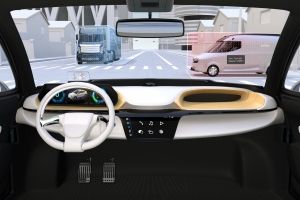
Late last fall, a Silicon Valley startup made headlines when one of their autonomous trucks completed the first known commercial freight cross-country trip, traveling from sunny California to Quakertown, PA, in less than three days.
Using cameras, radars, and laser-based technology, the developers were able to help the self-driving vehicle travel by interstate, powered and equipped for the long distance, various terrains, and changing weather conditions.
With significant technological breakthroughs like this, much buzz has been around when, where, and how autonomous commercial vehicles will be the norm and what that may mean for our industry and the truckers we rely on — and who rely on their jobs.
Are robots going to take over the world?
Many people don’t trust robots. A study by Oxford Economics, which found that robots could take over 20 million manufacturing jobs worldwide by 2030, proves there may be some validity to that rationale.
While this figure is startling and not the least-amount frightening for workers who may be vulnerable to these job losses, the study’s economic researchers emphasized that governments, companies, and policymakers should not be skeptical of these advancements in technology. Instead, they should help workers prepare for the potential upheaval with retraining programs that would help them diversify their skills more.
Autonomous trucking technology is not an imminent threat to driver jobs
As far as robotic trucks are concerned, most trucking analysts insist truckers have nothing to worry about. For one, autonomous trucks are highly expensive and highly liable. As such, most fleet companies are a long way away from investing in this new and costly technology — especially given that there isn’t much technology to invest in. As major liabilities, self-driving trucks have a long way to go from being in good graces with policymakers. Now, truck drivers and the companies they work for are liable for accidents. With robotics, legal liability is sticky. Current laws outline that freight companies who design autonomous trucks cannot be sued in hazardous incidents caused by malfunctions.
Further, self-driving trucks are miles away from being comparable to truck drivers who go through proper training and certifications to be entrusted with commercial vehicles. Any autonomous driving tests that have happened happen under highly monitored circumstances. With the average truck driver age currently at about 55 years old, many see autonomous trucks as future potential fillers for those truckers who will begin retiring. While all remains to be seen timing-wise, truckers are still very much in the driver’s seat — and will remain the most trusted to steer for the foreseeable future.
Self-driving trucks could benefit our industry in countless ways
In addition to possibly helping counterbalance a future truck driver shortage as many truck drivers above 55 years old begin to retire, autonomous vehicles can deliver significant benefits.
Automation can help various industries cope with a consistent uprise in demand, which is only heightening as consumer expectations continue to rise. While this transition will be slow and steady, autonomous trucks are expected to save our industry approximately 45% in operating costs in the U.S. Predictive reasoning for this number points to a more robust utilization of routes coming with less commuter congestion and greater flexibility into driving hours.
Much remains to be seen regarding the future of autonomous trucking technology. Keep tuning in to our Road Ahead Blog for more pertinent industry topics, and be sure to read this blog post on the delivery drone for some additional futuristic reading.